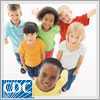Hand, foot, and mouth disease is a common viral illness that usually affects infants and children younger than 5 years old. However, it can sometimes occur in older children and adults. Typical symptoms of hand, foot, and mouth disease include fever, mouth sores, and a skin rash.
-
About Hand, Foot, and Mouth Disease (HFMD)
Describes causes of the disease, its symptoms, complications, how it spreads, how it is diagnosed, prevention, treatment... -
Outbreaks
Provides basic information about cases and outbreaks of hand, foot, and mouth disease... -
References & Resources
Provides references to scientific articles and educational materials... -
Multimedia
Lists a feature story, podcast, and other CDC resources about personal hygiene...
Prevention
Hand, foot, and mouth disease is spread from person to person through coughing and sneezing, or contact with blister fluid or feces (stool) of an infected person. You can lower your risk of being infected by
- Washing your hands often with soap and water
- Disinfecting dirty surfaces and soiled items
- Avoiding close contact such as kissing, hugging, or sharing eating utensils or cups with infected people
Commonly Confused With Foot-and-Mouth Disease
Hand, foot, and mouth disease is often confused with foot-and-mouth disease (also called hoof-and-mouth disease), which affects cattle, sheep, and swine. However, the two diseases are caused by different viruses and are not related. Humans do not get the animal disease, and animals do not get the human disease. For more information, see the U.S. Department of Agriculture National Agricultural Library, Foot-and-Mouth Disease.
Outbreaks of Hand, Foot, and Mouth Disease
Large outbreaks of hand, foot, and mouth disease are not common in the United States. However, in some countries in Asia, outbreaks are large and occur often. Thousands of people may get infected. Some people, particularly young children, may have severe disease requiring hospitalization or even causing death. Travelers to these countries can protect themselves by practicing personal hygiene tips. Learn more.
To learn more about outbreaks occurring in countries in Asia, visit the World Health Organization.
Podcast: Hand, Foot, and Mouth Disease
 A CDC epidemiologist, Dr. Eileen Schneider, talks about hand, foot, and mouth disease, its symptoms, how it spreads, and ways to help protect yourself and your children from getting infected with the virus. Listen to the 4-minute podcast.
A CDC epidemiologist, Dr. Eileen Schneider, talks about hand, foot, and mouth disease, its symptoms, how it spreads, and ways to help protect yourself and your children from getting infected with the virus. Listen to the 4-minute podcast.
- Page last reviewed: January 6, 2017
- Page last updated: January 6, 2017
- Content source:


 ShareCompartir
ShareCompartir